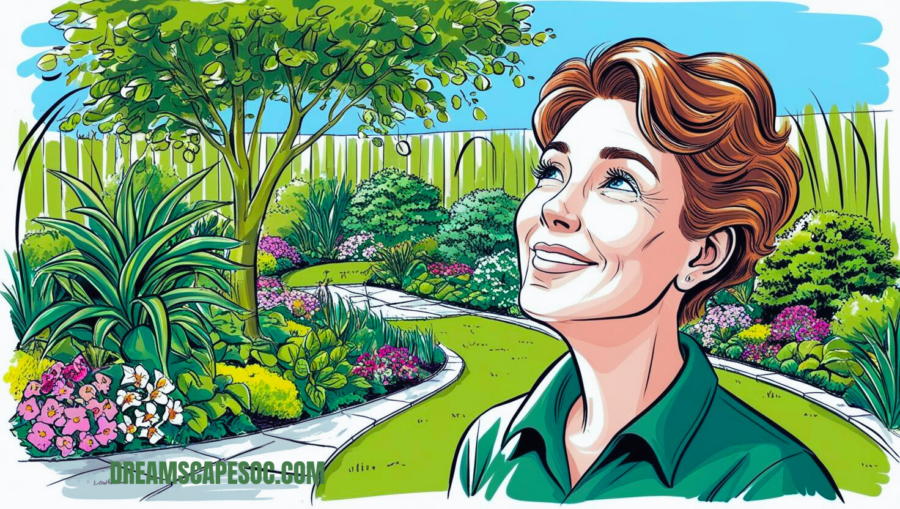What Is a Rooftop Garden?
So, what exactly is a rooftop garden? Simply put, it’s a garden planted on the roof of a building. This can range from a few potted plants to an entire landscaped oasis. Rooftop gardens come in two main types: extensive and intensive. Extensive rooftop gardens are lightweight and low-maintenance, making them perfect for drought-tolerant plants that require little soil. They are usually created more for the benefit of the environment than for habitation by humans. On the other hand, extensive rooftop gardens resemble traditional landscapes more because of their deeper soil, which allows for larger trees, plants, and even seating places. With areas for visitors to unwind and commune with nature, these gardens are meant to be appreciated.
By turning rooftops into green spaces, these gardens beautify buildings and create a sanctuary where people can escape the busy urban atmosphere.
- Environmental Impact: Rooftop gardens have a surprisingly positive impact on the environment. They help lower city temperatures by absorbing sunlight, which reduces what’s known as the “urban heat island effect.” These rooftop gardens also aid in air purification by covering the air with vegetation, which traps dust, pollutants, and other floating particles. They also contribute to the management of stormwater. Rooftop gardens hold onto water after rain, which eases the burden on municipal drainage systems and lowers the chance of flooding.
- Energy Efficiency: Enhancing a building’s energy efficiency is another wonderful benefit of rooftop gardens. These healthy areas serve as insulators by nature. They assist in maintaining warmth in the winter and absorb sunlight to keep buildings cool in the summer. You may reduce your heating and cooling costs by using natural insulation. Rooftop gardens can increase a building’s affordability and sustainability by lowering the demand for HVAC systems.
- Benefits for the mind and society: Having access to green spaces has been demonstrated to elevate mood, lower stress levels, and promote mental clarity. You may escape the hustle and bustle of the city and rejuvenate in a rooftop garden. They create a sense of community by serving as meeting spots where individuals may come together, interact, and take in the beautiful surroundings. The city life is made more pleasant and enjoyable by these green spaces!
- Economic Advantages: Rooftop gardens aren’t just good for the environment and our well-being—they can also have a positive financial impact. Green roofs increase a building’s appeal to potential tenants and buyers, which frequently results in higher property prices. Herbs, vegetables, and even fruits can be grown in rooftop gardens. Rooftop urban gardening is affordable, supports sustainability, and makes fresh food more accessible.
Elevate Your Outdoor Space—Explore Exclusive Landscaping Concepts
Designing Your Own Rooftop Garden
- Assessing Your Space: Before you start planting, you’ll want to assess your rooftop space. First, think about the weight your roof can support. Soil, plants, and features can add up, so it’s a good idea to consult a structural engineer to make sure everything is safe. Next, consider water drainage. Study the way water drains; you will want the water to drain away. Sunlight is also a key factor—different plants thrive under different light conditions, so it’s essential to pick plants that will be happy in the amount of light your rooftop receives.
- Selecting the Correct Plants: A rooftop garden might succeed or fail based on the selection of plants. Since rooftops are often exposed to the elements, choose hardy and drought-tolerant plants that can withstand sun and wind. Succulents, grasses, and sedums are great choices because they require minimal water. If you’re planning for more wind exposure, go for wind-resistant shrubs and small trees. And if you’re interested in growing your own food, herbs, vegetables, and compact fruits like strawberries, they will be plentiful in containers or raised beds.
- Incorporating Essential Features: Beyond plants, there are a few features that can really elevate your rooftop garden. An irrigation system is incredibly helpful, especially for larger gardens, as it keeps your plants watered consistently. Raised beds and containers can give structure to your garden while helping certain plants get the soil depth they need. Adding windbreaks or shade structures can protect delicate plants and create a cozy seating spot. Last but not least, add cozy furnishings and décor to your room. To improve the feeling of the space, consider adding string lights, lanterns, or even a tiny water feature.
- Sustainable Additions: If you’re interested in eco-friendly gardening, there are a few sustainable features you might want to add. One excellent method of recycling organic waste is composting, which gives your plants natural fertilizer—providing natural fertilizer for your plants. You could also install a rainwater harvesting system to collect water for your garden. And for lighting, consider solar-powered options that don’t rely on traditional energy sources.
Transform Your Outdoor Space Today – Download Your Free Landscaping and Gardening Checklist
| Type | Description | Maintenance | Plants |
| Extensive | Lightweight, low-maintenance, eco-focus | Minimal | Succulents, sedums, grasses |
| Intensive | Traditional garden, deeper soil, people-friendly | Moderate to high | Trees, shrubs, flowers |
| Semi-Intensive | Blend of both, medium soil depth | Moderate | Herbs, small shrubs |
Key Takeaway: Rooftop gardens aren’t just about adding greenery—they’re a powerful way to boost environmental sustainability, reduce city temperatures, improve mental well-being, and even cut down on energy costs.

Rooftop Garden Maintenance Tips
Once you have your rooftop garden set up, you’ll want to keep it looking lush and healthy. Here are some maintenance tips to help you out.
- Watering and Irrigation: Wating your rooftop garden properly is essential, especially during warmer months. Drip irrigation systems are fantastic, as they allow water to be delivered directly to the roots without waste. Mulching is also beneficial because it protects plants from changes in temperature and retains soil moisture, which lessens the need for frequent watering.
- Seasonal Care: Rooftop gardens need extra attention as the seasons change. In spring, refresh your soil and prune plants to encourage new growth. During the hot summer months, check water levels more frequently and provide shade for plants sensitive to intense sunlight. In the fall, clear out any dead leaves and then add a layer of organic material. And when winter rolls around, protect delicate plants with covers and add extra mulch to keep roots warm.
- Pest and Disease Control: Even on rooftops, plants can attract pests. Green and effective remedies include neem oil, soap sprays, and diatomaceous earth. Furthermore, beneficial insects that help with pollination and natural pest control, such as ladybugs and bees, may be encouraged.
Stunning Rooftop Gardens Worldwide
Rooftop gardens around the world showcase the incredible possibilities of these green areas, so check them out if you need some inspiration. For instance, Marina Bay Sands in Singapore offers guests a great view of the city from its rooftop garden, which includes landscaping and an infinity pool. In New York City, Brooklyn Grange operates the world’s largest soil rooftop farm, growing fresh vegetables and honey for local markets. Chicago City Hall has a garden with over 20,000 plants, setting a standard for green roofs on government buildings. In Osaka, Namba Parks is a unique commercial complex with a rooftop that resembles a natural canyon, complete with paths, waterfalls, and lush greenery. The Barbican Centre in London features a gorgeous conservatory filled with over 2,000 types of tropical plants and trees, creating a surprising green oasis right in the city.
In conclusion, rooftop gardens transformed city living by offering a beautiful way to introduce nature into cities. A rooftop garden can provide a number of advantages, such as improving sustainability, producing your own food, or creating a peaceful haven.
FAQs
What’s the weight limit for a rooftop garden?
Most rooftops are built to handle specific weight limits, so before starting a garden, it’s best to consult a structural engineer who can help assess what your roof can safely support.
Can I grow fruits and vegetables on my rooftop?
Absolutely! Many fruits and vegetables do well in rooftop gardens. Opt for compact and container-friendly options like tomatoes, peppers, and herbs for a bountiful urban harvest.
Are rooftop gardens expensive to maintain?
The cost of maintaining a rooftop garden varies depending on factors like garden size and plant types. Sustainable features like rainwater harvesting can help reduce long-term maintenance costs.
Do rooftop gardens attract pests?
Like any garden, rooftop gardens can attract pests, but eco-friendly pest control methods, such as natural repellents and beneficial insects, can help keep problems in check.
What’s the best way to water a rooftop garden?
A drip irrigation system is ideal for rooftop gardens, as it ensures plants get the water they need without wasting any. Adding mulch around plants can also help retain moisture.

